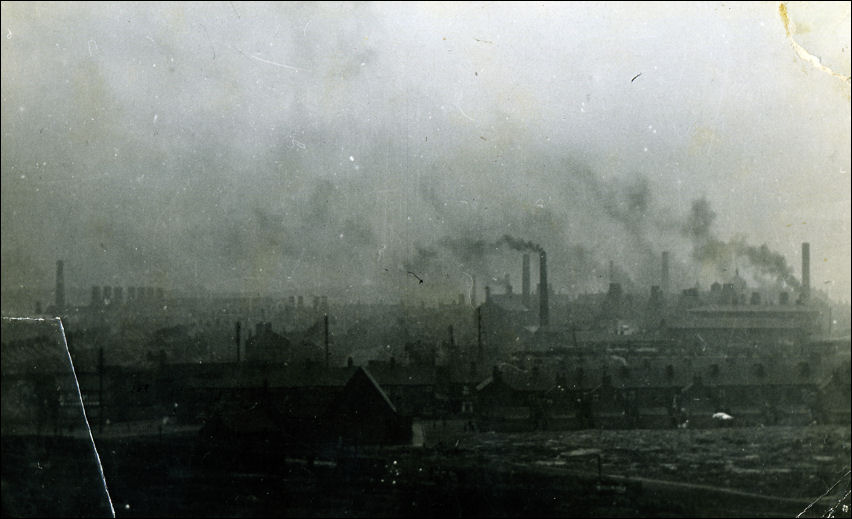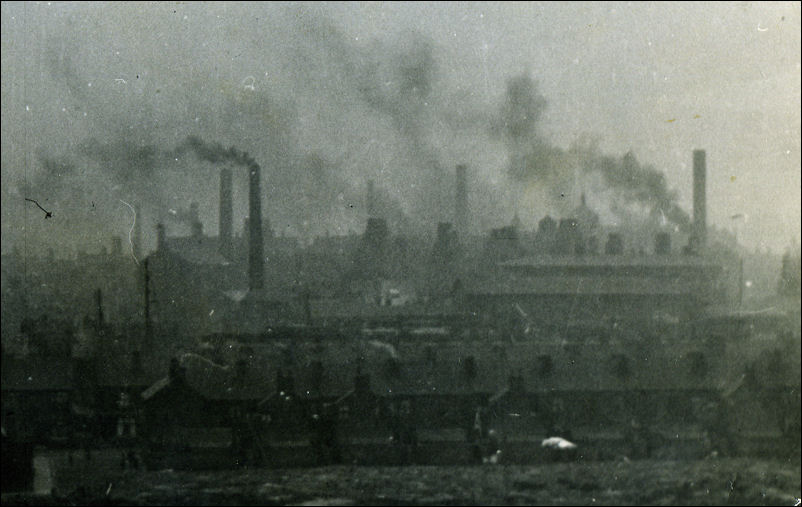![]()
|
|
|
|
|
Stoke-on-Trent - Potworks of the week |
Advert of the Week
Photo of the Week
Pottery Kilns of Tunstall - 1910

smoking chimneys and
pottery kilns of Tunstall in 1910
|
"Tunstall is the youngest of the “five towns” which go to make up the Staffordshire Potteries, but it is one of the most vigorous and flourishing of them. Ward, in his history, so far back as 1843, states that “Tunstall from being a small village of scattered inhabitants had become a large and populous town, and had furthermore exhibited such an extraordinary increase within the present century as could scarcely be paralleled” If this was true of the Tunstall of more than half a century ago, it is more than ever true of the Tunstall of to-day. In 1851, eight years after the historian wrote, the population was 9,566; to-day it is estimated at 27,850. In 1851, the rateable value was £18,788; in 1906, it was £67,284. The chief manufacture of the town is earthenware, and the products of many of the local firms are of world-wide reputation. Coal and iron are largely raised in the town and its immediate neighbourhood. The Chatterley-Whitfield Collieries, one of the largest and best on the local coalfield, are close to the town, and the huge collieries and ironworks of Messrs. Robert Heath and Sons are situated only a short distance away. There is also a considerable manufacture of bricks and tiles." 1907 Staffordshire Sentinel 'Business Reference Guide to The Potteries, Newcastle & District'
|

enlargement of one section of
the photo
note how the terrace housing is so close to the smoky chimneys
|
Smuts! "My mother was horrified by the Potteries. Partly by its poverty, for it was a low-wage area, as were all industries in those days which employed a high percentage of women and girls. Even so, there was much unemployment. My mother wept at the poverty and said, 'They are so long-suffering, the poor people. They never grumble. I have not heard many complaints since we came here, I'll give them that.' But more important to her than the poverty, I think, was the dirt. 'Manchester is a factory town but it is not a dirty town. It is wet but there is no mud. The factory chimneys are tall and puff the smoke high into the sky, and then the wind from the Irish Sea or the Pennines carries it away. But in the Potteries the pot-banks are so low that smoke just tumbles down into the houses. And those horrible pot-banks are everywhere, close up to where people live. They burn disgusting cheap slack instead of real Wigan coal, and you can hear it exploding in the ovens and see it jumping up the pot-banks in great showers of sparks like nasty Japanese fireworks, and coming down everywhere in smuts. Smuts!' Her voice swelled with outrage as she pronounced the deadly word. 'In Manchester you could not get a smut bigger than the head of a pin but here there are half-crown smuts and smuts that would cover a brass plaque on a doctor's surgery door. What is to be done in a place where a beautifully washed man's shirt comes back in the evening battle-ship grey, or worse? And a girl's nice new blouse is filthy she even gets to school, poor little thing." Paul
Johnson The Vanished Landscape - a 1930s Childhood in the Potteries |